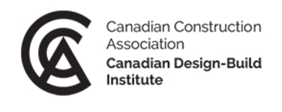
The Advantages Of The Design-Build Method For Your Commercial Project
The Design/Build method offers several advantages over traditional project delivery, in particular, a one-stop solution that is more time- and cost-effective.
In the traditional delivery of a construction project, known as the Design/Bid/Build method, the owner would have to manage two separate contracts. This includes one with the project designer and one with the contractor. Such a workflow could lead to several complications, including:
- Delays from miscommunication or discrepancies between design and construction objectives
- An adversarial relationship between the designer and contractor
- In extreme cases, litigation
Nowadays, there is an alternative project delivery method that can mitigate, and sometimes even eliminate, the above-mentioned issues. This is the Design/Build method.
The Design/Build method refers to a project delivery system which involves only one contract between the owner and a design-build entity, including all specialists, subcontractors, and sub-consultants. This means that there is a single point of responsibility for all design and construction decisions and issues.
Advantages of the Design-Build Method
What are the advantages of the Design/Build method? Here are just a few:
Project Innovation
The close working relationship between the design and construction departments in a Design/Build methodology can often foster innovative solutions to unexpected challenges. For instance, a Design/Build entity may be able to find a cost-effective solution for a budget without sacrificing appeal.
Reduced Costs
A Design/Build entity’s unified approach to design and construction can save the project owner a lot of money in the long run. The Design/Build entity has strong incentive to reduce the number of design changes that occur during the course of the project, which is an advantage to the design department. Disputes over additional design features can be avoided, as well as unnecessary delays due to lack of communication or misunderstandings. The owner can also save through the early ordering of materials.
A Shorter Timeframe
Because of the close collaboration between the design and construction branches, a Design/Build entity can often deliver shorter timeframes. This is advantageous both to the owner and to the Design/Build entity. Thus, they may be able to take on several projects at the same time. The Design/Build entity may also be able to present alternative design proposals to the owner for review in a streamlined manner, potentially allowing the project to be completed in an even shorter period of time.
Internal Conflict Resolution
The last thing an owner wants to do is handle personality differences between designers and contractors, designers and sub-consultants, or contractors and subcontractors. With the Design/Build delivery method, conflict resolution is the sole responsibility of the Design/Build entity. The issues are resolved in-house, and the customer receives the best work the entity can give, without the drama.
Who Should Use the Design-Build Method?
While the Design/Build method may not be appropriate for every project, it has found wide success. For instance, according to reminetwork.com, Design/Build “is now used in 40 [percent] of all non-residential construction projects in the U.S., including 80 [percent] of military projects and 50 [percent] of projects worth more than $10 million.” Clearly, the Design/Build method can be implemented in a wide variety of building projects.
Find More Advantages of the Design-Build Method
At Antham Construction Group, Inc., we provide our clients with a unified, seamless approach to design and construction. If you are interested in learning more about the advantages of the Design/Build method, reach out to us today.
Recent Posts

Want to Reduce Noise in the Office? Improve Your Acoustics

6 Of The Most Common Office Design Mistakes You’ll Want To Avoid

The Benefits and Drawbacks of Open Ceilings

3 MORE Upcoming Interior Design Concepts for the Office Space

Tips From a Commercial Contractor: The 5 Most Common Complaints About Office Design









